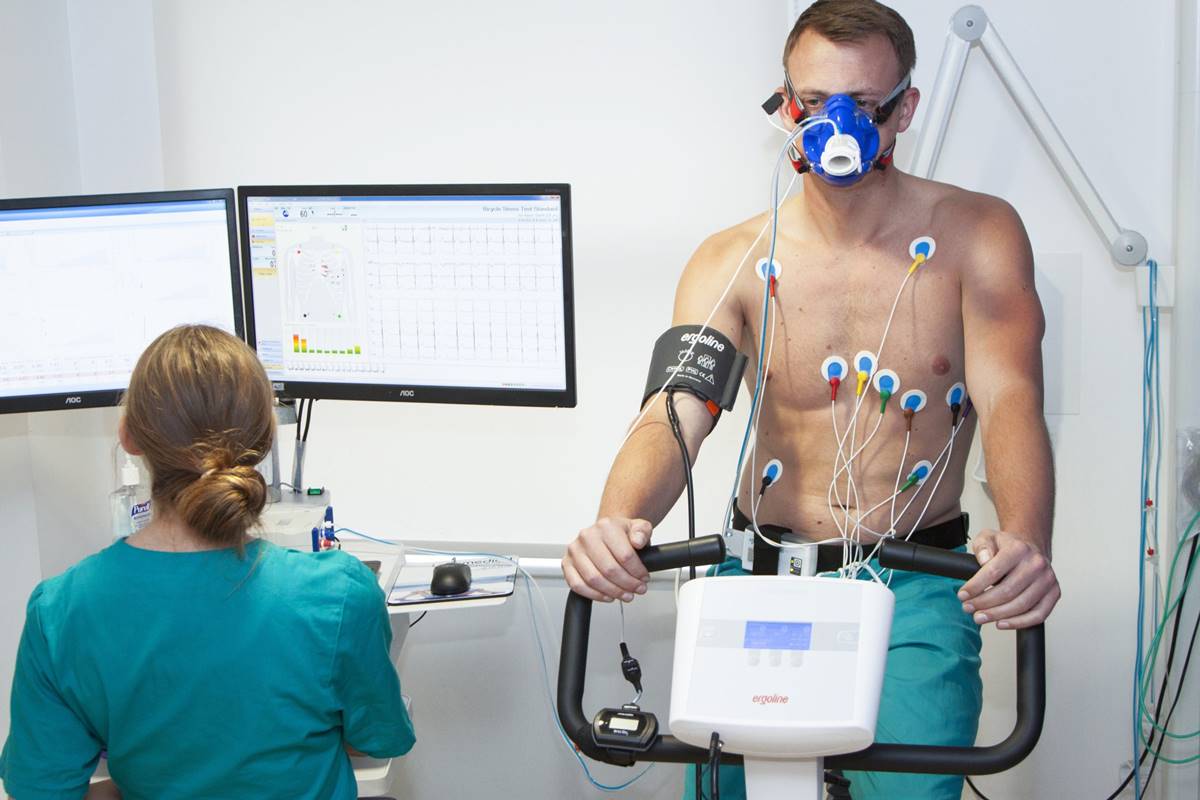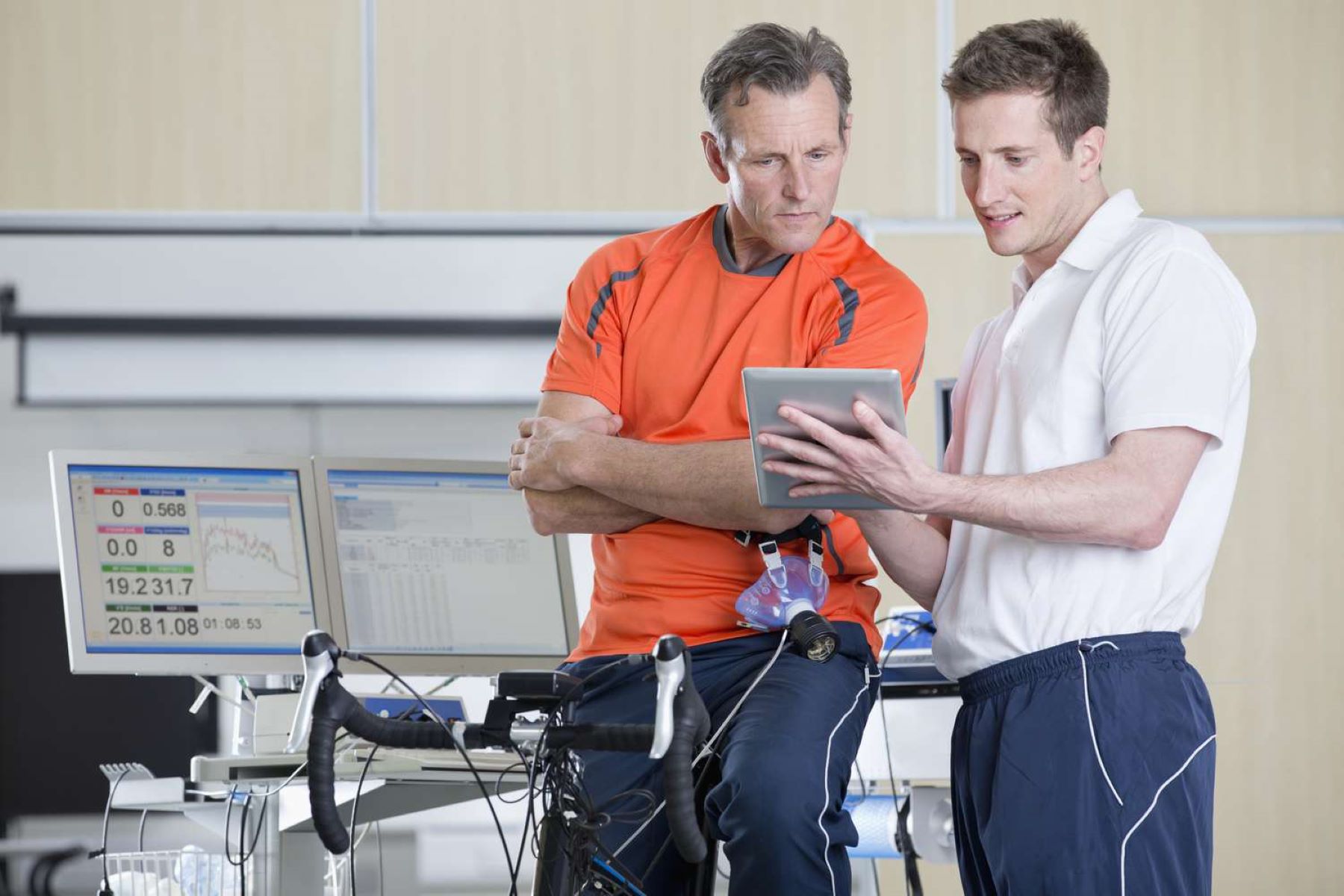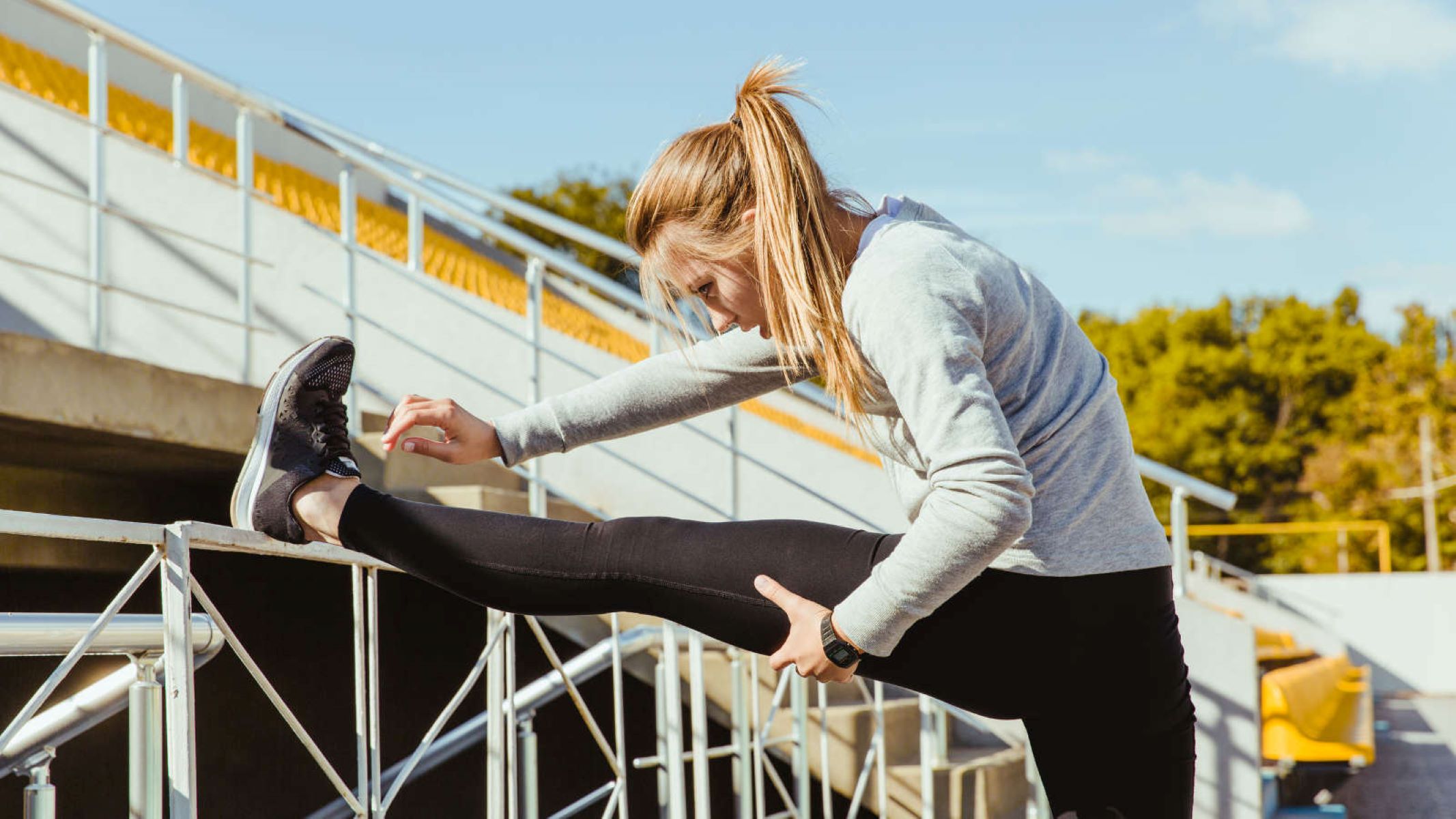Home>Misc>Featured>How Is Blood Flow Related To Lung Function During Exercise


Featured
How Is Blood Flow Related To Lung Function During Exercise
Published: October 2, 2023
Discover how blood flow is linked to lung function during exercise in this featured article. Explore the intricate connection between cardiovascular and respiratory systems in optimizing performance.
Introduction
When it comes to exercise and physical activity, our bodies undergo a multitude of complex processes to meet the increased demands. One crucial aspect of this adaptation is the relationship between blood flow and lung function. Understanding how blood flow is related to lung function during exercise is not only important for athletes and fitness enthusiasts but also has significant implications for overall health and well-being.
In this article, we will delve into the intricate connection between blood flow and lung function during exercise. We will explore the physiological changes that occur, the regulation of blood flow, and the factors that can affect this relationship. Additionally, we will discuss the various techniques used to measure blood flow and lung function during exercise and examine the clinical implications of these findings.
Before we delve deeper into the topic, let’s briefly define blood flow and lung function. Blood flow refers to the movement of blood through the circulatory system, supplying oxygen and nutrients to the body’s tissues and organs. On the other hand, lung function refers to the capacity of the lungs to take in oxygen and expel carbon dioxide, allowing for optimal gas exchange.
During exercise, both blood flow and lung function undergo significant changes to support the increased demand for oxygen in the working muscles. The cardiovascular system works to deliver oxygen-rich blood efficiently, while the respiratory system ensures efficient air exchange in the lungs and the removal of waste gases. The intricate interplay between blood flow and lung function is crucial for maintaining optimal performance and physical health during exercise.
Throughout this article, we will explore the fascinating journey that blood takes through the body, from the heart to the lungs and then to the working muscles. We will examine the mechanisms involved in regulating blood flow and lung function and explore how different factors, such as fitness level, age, and health conditions, can impact this delicate balance.
Ultimately, gaining a deeper understanding of how blood flow is related to lung function during exercise can provide valuable insights for athletes, fitness professionals, and researchers. By optimizing this relationship, we can enhance athletic performance, improve physical fitness, and potentially uncover new strategies for managing respiratory conditions and cardiovascular health.
Overview of Blood Flow and Lung Function
To fully comprehend the relationship between blood flow and lung function during exercise, it is essential to have a basic understanding of how these two systems work together. Let’s begin with an overview of blood flow and lung function.
Blood flow, as mentioned earlier, refers to the movement of blood throughout the body. It is facilitated by the pumping action of the heart and the intricate network of blood vessels that span the entire body. The cardiovascular system, composed of the heart, blood vessels, and blood, is responsible for circulating oxygen and nutrients to all the tissues and organs in our body.
Lung function, on the other hand, is the process by which our lungs take in oxygen from the air and remove carbon dioxide, a waste product, from our bodies. Oxygen is essential for cellular respiration, which is the process that generates energy for our bodies. Without proper lung function, our bodies would not receive the necessary oxygen to support vital functions.
During exercise, when the body requires more oxygen to fuel the working muscles, both blood flow and lung function adapt to meet this increased demand. The heart pumps faster and stronger, circulating more blood to deliver oxygen to the muscles. At the same time, the lungs work more efficiently to take in larger amounts of oxygen and eliminate carbon dioxide.
It is important to note that blood flow and lung function are closely intertwined. The lungs rely on a steady flow of blood to transport oxygen from inhaled air to the bloodstream, while the heart depends on oxygen-rich blood returned from the lungs to pump throughout the body. This intricate relationship ensures that the working muscles receive the necessary oxygen and nutrients during exercise.
Furthermore, blood flow and lung function are regulated by a complex interplay of physiological mechanisms. Blood vessels dilate to increase blood flow to the muscles, while bronchial tubes in the lungs expand to allow for greater air intake. These adaptations collectively enhance the capacity of the cardiovascular and respiratory systems to meet the demands of exercise.
In the following sections, we will explore in more detail the specific changes that occur in blood flow and lung function during exercise. We will examine the physiological mechanisms involved, the regulatory factors at play, and the various techniques used to measure and analyze these changes. Understanding these intricacies will shed light on the profound impact that exercise has on our bodies and the importance of maintaining a healthy balance between blood flow and lung function.
The Role of Blood Flow in Lung Function during Exercise
During exercise, blood flow plays a crucial role in supporting and enhancing lung function. The increased demand for oxygen by the working muscles requires a corresponding increase in blood flow to deliver the necessary oxygen to the lungs and remove waste products, such as carbon dioxide.
One primary function of blood flow in lung function during exercise is to facilitate gas exchange. Oxygen from inhaled air diffuses across the walls of the alveoli, tiny air sacs in the lungs, into the bloodstream. Simultaneously, carbon dioxide, a waste product generated by cellular respiration, diffuses out of the bloodstream into the alveoli to be exhaled.
For efficient gas exchange to occur, a well-regulated blood flow is necessary. The pulmonary circulation, which is the circulation of blood between the heart and the lungs, ensures a continuous supply of oxygen-rich blood. This oxygenated blood is then delivered to the capillaries surrounding the alveoli, where gas exchange takes place.
During exercise, the body’s increased need for oxygen prompts the cardiovascular system to adjust blood flow to the working muscles accordingly. The heart beats faster and pumps more blood per minute, while blood vessels dilate to increase the delivery of oxygen-rich blood to the tissues, including the lungs.
This increased blood flow to the lungs optimizes gas exchange by providing a greater surface area for oxygen to diffuse into the bloodstream. The increased blood flow also helps remove carbon dioxide efficiently, ensuring proper elimination of waste gases from the body.
Blood flow also plays a role in maintaining the ventilation-perfusion ratio, which is the balance between air entering the lungs (ventilation) and blood flow to the lungs’ capillaries (perfusion). During exercise, blood vessels in the lungs dilate to improve blood flow, matching the increased ventilation. This optimization of the ventilation-perfusion ratio allows for more efficient gas exchange and ultimately enhances lung function during exercise.
Furthermore, blood flow helps regulate the temperature of the lungs during exercise. As the body heats up during physical activity, blood flow to the lungs increases to dissipate heat and maintain optimal lung function. This regulation of lung temperature is important for maintaining the efficiency of gas exchange and preventing overheating or damage to the delicate lung tissue.
Overall, the role of blood flow in lung function during exercise is vital for ensuring efficient gas exchange, removing waste products, optimizing the ventilation-perfusion ratio, and regulating lung temperature. The cardiovascular system’s ability to adapt and deliver oxygen-rich blood to the lungs plays a crucial role in supporting exercise performance and maintaining overall respiratory health.
Physiological Changes in Blood Flow during Exercise
During exercise, the body undergoes a series of physiological changes to accommodate the increased demands for oxygen and nutrients. One significant change is the regulation of blood flow to ensure optimal delivery of oxygen-rich blood to the working muscles.
When physical activity begins, the body responds by activating the sympathetic nervous system, which triggers a cascade of events that ultimately increase blood flow. The heart rate increases, and the cardiac output, which is the amount of blood pumped by the heart per minute, rises. This increase in cardiac output allows for a greater volume of blood to be circulated throughout the body, including to the working muscles and the lungs.
Another adaptation that occurs during exercise is the dilation of blood vessels, known as vasodilation. This dilation, particularly in the arterioles and capillaries near the muscles and lungs, allows for an increased flow of blood to these regions. By widening the blood vessels, the body can deliver more oxygen and nutrients to the working muscles and remove waste products effectively.
In addition to vasodilation, blood flow is also redirected from the organs and non-essential tissues to the muscles and lungs. This redirection, facilitated by the constriction of blood vessels in non-essential areas, ensures that a significant portion of the blood supply is prioritized for the areas that require it the most during exercise.
Furthermore, the redistribution of blood flow during exercise is influenced by various factors, including metabolic demand, sympathetic nervous system activity, and local factors such as oxygen and carbon dioxide levels. These factors work together to regulate blood flow and ensure that the working muscles and lungs receive adequate oxygen and nutrients.
During intense exercise, maximum blood flow can occur due to the recruitment of additional blood vessels and increased cardiac output. This increased blood flow helps to meet the high oxygen demand of the muscles and maintain optimal muscle performance.
It is important to note that individual variations in blood flow regulation can occur due to factors such as fitness level, age, and overall health. Well-trained athletes tend to have more efficient cardiovascular systems and may experience greater blood flow to the working muscles during exercise compared to sedentary individuals. Age can also influence blood flow regulation, with older individuals typically exhibiting reduced vasodilatory capacity and impaired blood flow response to exercise.
In summary, during exercise, the body undergoes physiological changes to increase blood flow and meet the increased demands for oxygen and nutrients. These changes include an increase in heart rate and cardiac output, vasodilation to allow for greater blood flow, redirection of blood flow to the working muscles and lungs, and maximum blood flow recruitment during intense exercise. Understanding these changes is crucial for optimizing exercise performance and maintaining overall cardiovascular health.
Regulation of Blood Flow during Exercise
During exercise, the regulation of blood flow is a complex process involving the coordination of various physiological mechanisms. These mechanisms work together to ensure that oxygen-rich blood is delivered to the working muscles and the lungs efficiently. Let’s explore the different ways in which blood flow is regulated during exercise.
One important factor in the regulation of blood flow is the metabolic demand of the muscles. When muscles are active, they produce by-products, such as carbon dioxide and lactic acid, which stimulate vasodilation. This vasodilation increases blood flow to the working muscles, allowing for the delivery of oxygen and nutrients and the removal of waste products.
In addition to metabolic demand, the sympathetic nervous system plays a vital role in regulating blood flow during exercise. The sympathetic nervous system is responsible for the “fight or flight” response and triggers various physiological changes in the body, including the increase in heart rate and vascular constriction or dilation.
During exercise, the sympathetic nervous system is activated, leading to vasoconstriction in non-essential areas, such as the digestive system and the skin, and vasodilation in the working muscles and the lungs. This redistribution of blood flow ensures that the areas that require the most oxygen and nutrients receive an adequate supply.
Local factors also contribute to the regulation of blood flow during exercise. These factors include oxygen and carbon dioxide levels, as well as the release of vasodilator substances, such as nitric oxide, from the endothelial cells lining the blood vessels. Low oxygen levels, high carbon dioxide levels, and the release of vasodilators signal the blood vessels in the muscles and lungs to dilate and increase blood flow to these areas.
Furthermore, the release of hormones, such as adrenaline, during exercise can also impact blood flow regulation. Adrenaline enhances the effects of the sympathetic nervous system, leading to increased heart rate and vasoconstriction in non-essential areas, further redirecting blood flow to the working muscles and the lungs.
It is important to note that individual factors, such as fitness level, age, and overall health, can influence the regulation of blood flow during exercise. Well-trained athletes tend to have more efficient blood flow regulation, with increased vasodilatory capacity and enhanced muscular blood flow. Older individuals may experience reduced vasodilatory response and impaired blood flow regulation during exercise.
In summary, the regulation of blood flow during exercise involves the coordination of metabolic demand, the sympathetic nervous system, local factors, and hormonal responses. These mechanisms ensure that the working muscles and the lungs receive adequate oxygen and nutrients for optimal performance. Understanding the regulation of blood flow during exercise is crucial for athletes, fitness enthusiasts, and healthcare professionals in optimizing exercise performance and maintaining cardiovascular health.
Factors Affecting Blood Flow and Lung Function during Exercise
Several factors can influence blood flow and lung function during exercise. These factors can have a significant impact on the ability of the cardiovascular and respiratory systems to meet the increased demands for oxygen and nutrients. Let’s explore some of the key factors affecting blood flow and lung function during exercise.
1. Fitness Level: The level of physical fitness plays a crucial role in blood flow and lung function during exercise. Well-trained individuals generally have more efficient cardiovascular and respiratory systems, allowing for greater oxygen delivery to the muscles and optimal lung function. Regular exercise and training can improve blood flow capacity and enhance lung function, leading to improved exercise performance.
2. Age: Age can affect blood flow and lung function during exercise. With aging, there may be a decline in cardiovascular fitness and a decrease in the ability of blood vessels to dilate, resulting in reduced blood flow to the working muscles and the lungs. Additionally, lung function may be impaired due to changes in lung elasticity and decreased respiratory muscle strength in older individuals.
3. Health Conditions: Pre-existing health conditions can impact blood flow and lung function during exercise. Individuals with cardiovascular diseases, such as coronary artery disease or heart failure, may experience reduced blood flow to the working muscles and lungs, affecting exercise capacity. Respiratory conditions, such as asthma or chronic obstructive pulmonary disease (COPD), can impair lung function and limit oxygen uptake during exercise.
4. Environmental Factors: Environmental conditions, including temperature, humidity, and altitude, can influence blood flow and lung function during exercise. In hot and humid environments, the body needs to divert blood flow to the skin for thermoregulation, potentially reducing blood flow to the muscles. Similarly, at high altitudes, where oxygen levels are lower, blood flow and lung function can be affected, requiring the body to adapt to the reduced partial pressure of oxygen.
5. Hydration Status: Proper hydration is essential for optimal blood flow and lung function during exercise. Dehydration can lead to a decrease in blood volume, resulting in reduced cardiac output and compromised blood flow to the working muscles and the lungs. This can impair exercise performance and increase the risk of heat-related illnesses.
6. Exercise Intensity and Duration: The intensity and duration of exercise directly affect blood flow and lung function. Higher intensity exercise requires a greater demand for oxygen, leading to increased cardiac output and blood flow to the muscles and lungs. Prolonged exercise can also place increased stress on the respiratory system, potentially impacting lung function.
It is important to consider these factors when designing exercise programs or assessing an individual’s exercise capacity. Monitoring blood flow and lung function during exercise, especially in individuals with underlying health conditions, is crucial for optimizing performance and ensuring safety during physical activity.
Overall, understanding the factors that can affect blood flow and lung function during exercise allows individuals and healthcare professionals to tailor exercise interventions, monitor performance, and make informed decisions to promote cardiovascular health and respiratory function.
Measurement Techniques for Blood Flow and Lung Function during Exercise
Accurately assessing blood flow and lung function during exercise is essential for understanding the physiological responses to physical activity and evaluating overall cardiovascular and respiratory health. Several measurement techniques are used to gather valuable data in this area. Let’s explore some of the commonly used techniques for assessing blood flow and lung function during exercise.
1. Cardiopulmonary Exercise Testing (CPET): CPET is a comprehensive test that combines measurements of both cardiovascular and respiratory variables during exercise. It involves monitoring heart rate, blood pressure, oxygen consumption, carbon dioxide production, and pulmonary function parameters. CPET provides valuable insights into the individual’s exercise capacity, cardiovascular fitness, and pulmonary function during exercise.
2. VO2 Max Testing: VO2 max is a measure of an individual’s maximum oxygen consumption rate during intense exercise. It is considered the gold standard for assessing cardiovascular fitness and aerobic capacity. VO2 max testing involves breathing into a specialized mask or mouthpiece while exercising on a treadmill or stationary bike. This allows for the precise measurement of oxygen uptake and carbon dioxide production, providing an accurate assessment of lung function and overall fitness.
3. Pulmonary Function Tests (PFTs): PFTs assess lung function by measuring various respiratory parameters, including lung capacity, airway resistance, and the rate of airflow. These tests are typically performed at rest but can also be performed during exercise to assess lung function under stress. PFTs provide valuable information about lung health and can help diagnose and manage respiratory conditions, such as asthma or chronic obstructive pulmonary disease (COPD).
4. Arterial Blood Gas (ABG) Analysis: ABG analysis involves drawing a blood sample from an artery to measure the levels of oxygen, carbon dioxide, and other gases in the blood. It provides valuable information about the efficiency of gas exchange in the lungs and can help diagnose respiratory conditions. ABG analysis can be performed at rest or during exercise to assess lung function and oxygenation under different physiological conditions.
5. Doppler Ultrasound: Doppler ultrasound is a non-invasive imaging technique used to assess blood flow in the arteries and veins. It measures the velocity and direction of blood flow using ultrasound waves. During exercise, Doppler ultrasound can assess blood flow in the peripheral arteries, providing insights into the efficiency of blood delivery to the muscles.
6. Near-Infrared Spectroscopy (NIRS): NIRS is a technique that measures the oxygen saturation levels in muscles and tissues. This non-invasive method uses light absorption to determine the oxygenation status of the tissues. NIRS provides valuable information about tissue oxygenation and can help assess blood flow response during exercise.
7. Electrocardiography (ECG): ECG measures the electrical activity of the heart and provides information about heart rate, rhythm, and overall cardiac function. ECG is commonly used during exercise to monitor heart rate and detect any abnormalities or changes in cardiac performance.
These measurement techniques offer valuable insights into the dynamic changes that occur in blood flow and lung function during exercise. They help healthcare professionals, researchers, and athletes understand the physiological responses to exercise, identify potential limitations or abnormalities, and design appropriate interventions to optimize performance and promote cardiovascular and respiratory health.
Clinical Implications of Blood Flow and Lung Function during Exercise
Understanding the clinical implications of blood flow and lung function during exercise is essential for managing cardiovascular and respiratory health. The relationship between these two systems has significant implications for both healthy individuals and those with underlying medical conditions. Let’s explore some of the clinical implications of blood flow and lung function during exercise.
1. Cardiovascular Health: The ability of the cardiovascular system to adapt and deliver oxygen-rich blood to the working muscles is crucial for overall cardiovascular health. Regular exercise and maintaining optimal blood flow can help improve cardiovascular fitness, reduce the risk of cardiovascular diseases such as coronary artery disease, and promote healthy blood pressure levels.
2. Respiratory Health: During exercise, lung function is enhanced to meet the increased demands for oxygen. Understanding lung function during exercise can help diagnose and manage respiratory conditions such as asthma, chronic obstructive pulmonary disease (COPD), and pulmonary hypertension. Monitoring lung function during exercise can guide treatment plans, optimize medication usage, and improve overall respiratory function.
3. Exercise Prescription: The knowledge of blood flow and lung function during exercise is pivotal in developing personalized exercise programs. Understanding an individual’s exercise capacity, cardiorespiratory limitations, and optimal exercise intensity can help tailor exercise prescriptions and ensure the safety and effectiveness of physical activity interventions.
4. Rehabilitation: Blood flow and lung function assessments are essential in rehabilitation settings. Monitoring changes in blood flow and lung function during exercise can guide the progression of rehabilitation programs for cardiac and respiratory conditions. By understanding an individual’s response to exercise, healthcare professionals can adjust treatment plans to improve cardiovascular and respiratory function and enhance overall physical performance.
5. Performance Optimization: Athletes and sports professionals can benefit from understanding blood flow and lung function during exercise to maximize performance. Assessing cardiovascular fitness, monitoring blood flow dynamics, and optimizing lung function can help athletes improve endurance, enhance oxygen uptake, and fine-tune their training programs for optimal athletic performance.
6. Early Detection: The measurement of blood flow and lung function during exercise can help detect early signs of cardiovascular and respiratory abnormalities. By assessing these parameters, healthcare professionals can identify subtle changes in function that may indicate potential health issues. Early detection and intervention can lead to better management of conditions and potentially prevent further complications.
Overall, understanding the clinical implications of blood flow and lung function during exercise is crucial for optimizing cardiovascular and respiratory health. It enables personalized exercise prescriptions, aids in rehabilitation, facilitates performance optimization, aids in the early detection of health issues, and ultimately contributes to overall well-being and quality of life.
Conclusion
The intricate relationship between blood flow and lung function during exercise is fundamental to our understanding of cardiovascular and respiratory health. The ability of the body to adapt and deliver oxygen-rich blood to the working muscles is essential for optimal performance and overall well-being.
Throughout this article, we have delved into the various aspects of this relationship. We explored the role of blood flow in facilitating gas exchange and maintaining the ventilation-perfusion ratio in the lungs. We discussed the physiological changes in blood flow during exercise and the complex mechanisms involved in its regulation.
Moreover, we examined the factors that can affect blood flow and lung function during exercise, including fitness level, age, health conditions, environmental factors, hydration status, and exercise intensity and duration. Understanding these factors allows for better customization of exercise programs and the identification of potential limitations or risks for individuals.
We also explored the measurement techniques used to assess blood flow and lung function during exercise, such as cardiopulmonary exercise testing, VO2 max testing, pulmonary function tests, arterial blood gas analysis, Doppler ultrasound, near-infrared spectroscopy, and electrocardiography. These techniques provide valuable insights into the dynamic changes that occur in these systems and aid in the diagnostics and management of cardiovascular and respiratory conditions.
Furthermore, we discussed the clinical implications of blood flow and lung function during exercise. The relationship between these systems has significant implications for cardiovascular health, respiratory health, exercise prescription, rehabilitation, performance optimization, and early detection of potential health issues.
In conclusion, understanding how blood flow is related to lung function during exercise is crucial for optimizing cardiovascular and respiratory function. By delving into the intricacies of this relationship and considering the various factors that influence it, we can make informed decisions regarding exercise interventions, enhance athletic performance, promote cardiovascular and respiratory health, and improve overall well-being.









